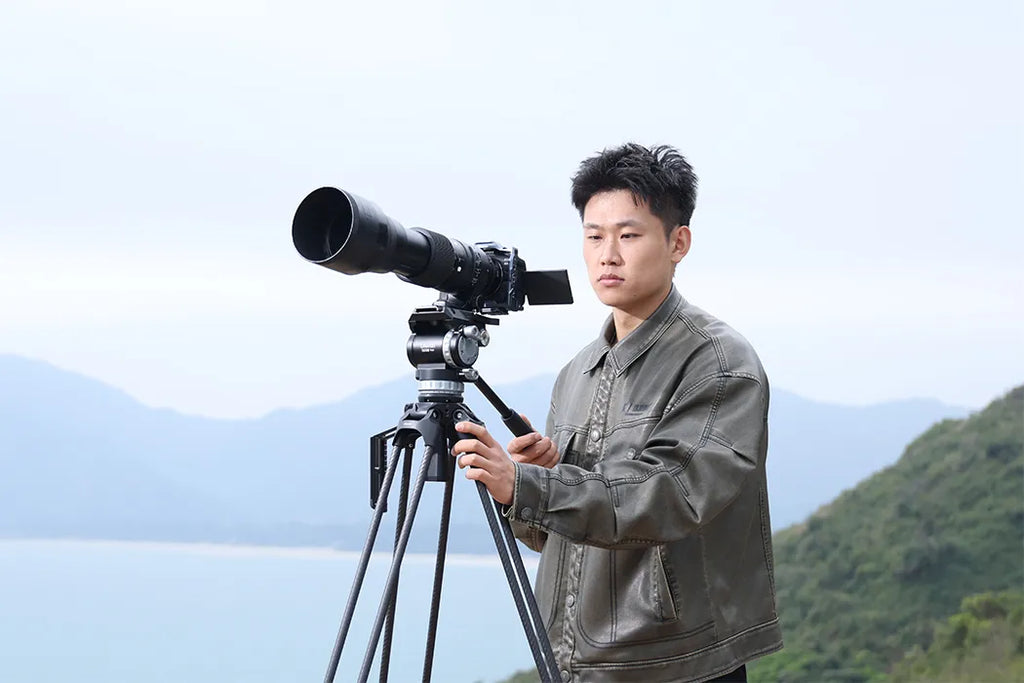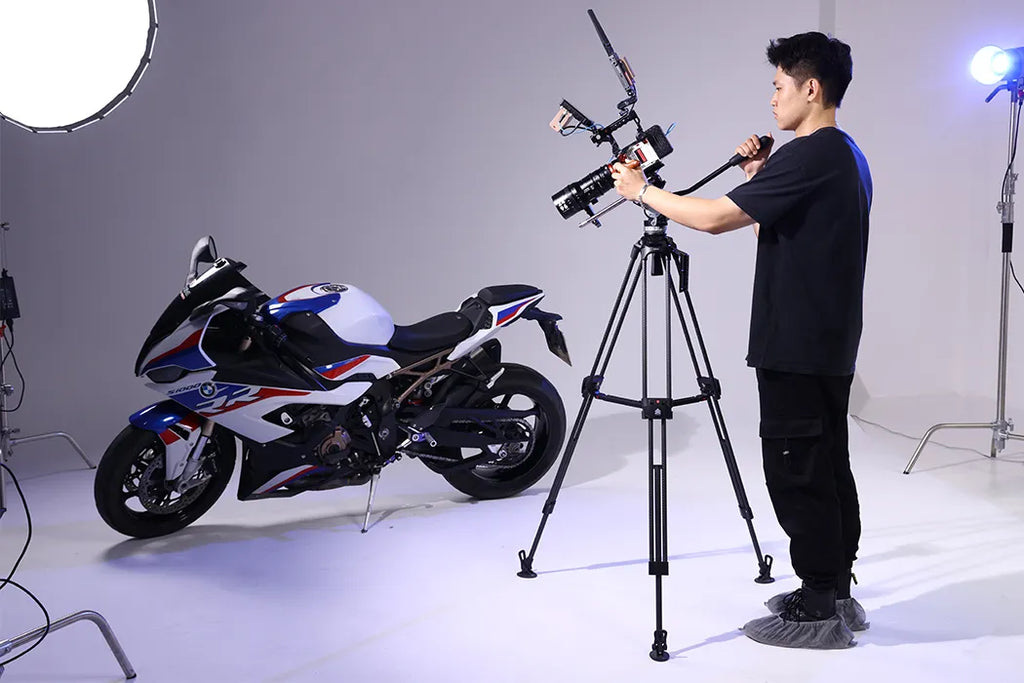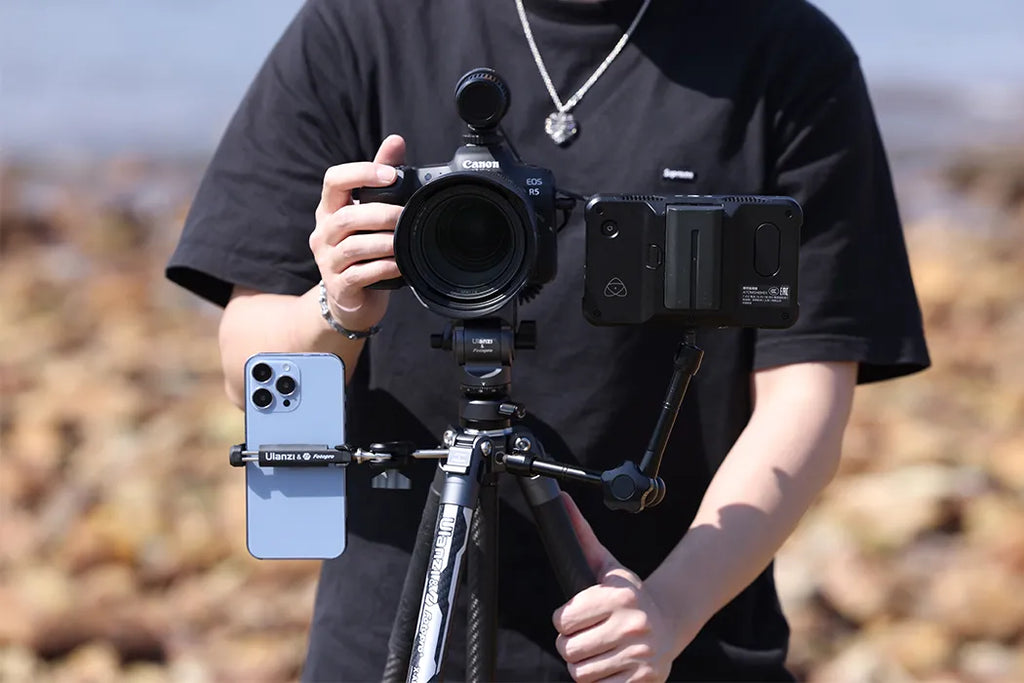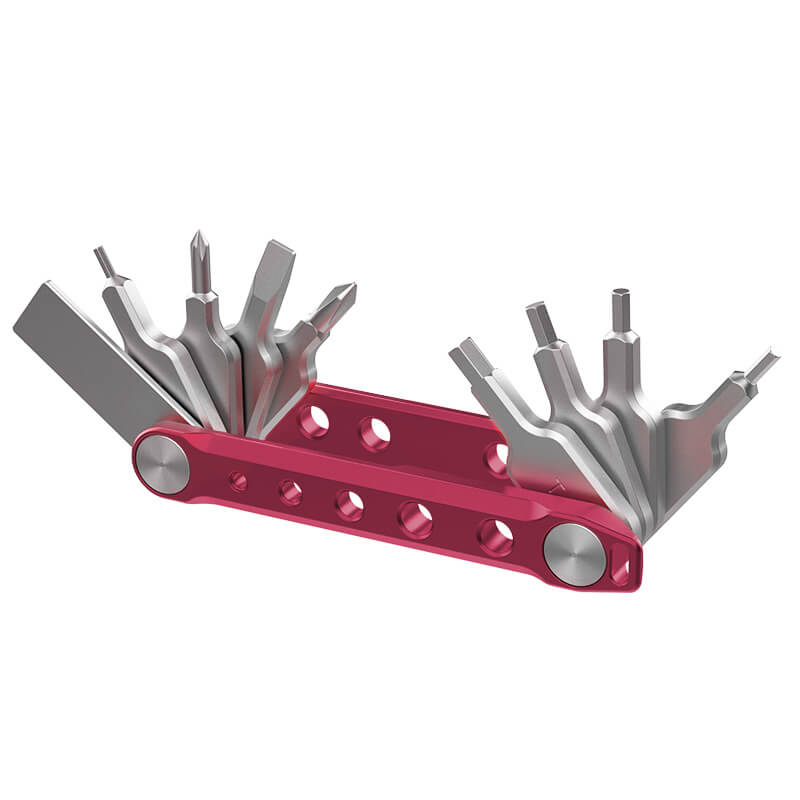Quick Answer
The amount of weight a camera tripod can hold depends on various factors, such as the tripod's material, size, design, and overall quality. On average, tripod weight capacities can range from 2 to 50 pounds (0.9 to 18.1 kg) or more, depending on the tripod category:
- Compact travel tripods: 2 to 8 pounds (9 to 3.6 kg)
- All-purpose tripods: 8 to 20 pounds (3.6 to 9.1 kg)
- Heavy-duty tripods:20 to 40 pounds (9.1 to 18.1 kg)
Introduction
Have you ever wondered just how much weight your trusty camera tripod can handle? Whether you're a professional photographer with heavy-duty gear or a hobbyist with a compact setup, understanding your tripod's weight capacity is crucial for ensuring your equipment's safety and stability. In this article, we'll dive into the factors that determine a tripod's load capacity, explore average weight limits for different tripod categories, and provide tips on how to use your tripod properly to get the best performance. By the end, you'll have a clear understanding of how much weight your tripod can support and how to choose the right one for your needs.

What Does Tripod Load Capacity Really Mean?
Tripod load capacity is all about how much weight your tripod can hold. Just like a chair is designed to hold a certain amount of weight before it gets wobbly or breaks, a tripod works the same way. This number is super important because it tells you how heavy your camera and accessories can be without causing any trouble.
Why Tripod Load Capacity Is Key
- Protect Your Equipment: Make sure your tripod can support the weight of your camera to prevent it from falling.
- Get Clear Photos: A stable tripod means you won't get blurry pictures.
- Make Your Tripod Last: Using a tripod within its weight limit means it won't break down from too much pressure.
What Happens if You Overload Your Tripod
- Unclear Images: An overloaded tripod won't hold still, leading to fuzzy images.
- Tripod Damage:Exceeding the weight limit can weaken or break your tripod over time.
What Are the Factors Affecting Tripod Weight Capacity?
When shopping for a tripod, it's essential to consider the various factors that influence its weight capacity. By understanding these factors, you can make an informed decision and choose a tripod that best suits your needs. Let's take a closer look at the main aspects that determine a tripod's load capacity.
- Tripod material: Aluminum tripods are a common choice, offering a good balance between weight, strength, and cost. They are suitable for most amateur and professional photographers. Carbon fiber tripods, while more expensive, are lighter and more rigid than aluminum, making them ideal for photographers who frequently travel or work in challenging outdoor conditions.
- Tripod size and design: The size and design of a tripod significantly affect its weight capacity. Tripods with thicker and larger diameter legs generally have a higher load capacity than those with thinner, smaller legs. Tripods with fewer leg sections tend to be more stable and have a higher weight capacity than those with more sections. Additionally, tripods with a fixed center column are typically more stable than those with a reversible or split center column.
- Tripod quality and craftsmanship: The overall quality and craftsmanship of the tripod greatly influence its weight capacity. High-end tripods from reputable manufacturers are designed to withstand heavy loads and harsh conditions. They undergo rigorous testing and are built with premium materials, ensuring reliability and longevity. Entry-level tripods may have lower weight capacities and may not be as durable or reliable in the long run.
By considering these factors, you'll be better equipped to choose a tripod that can safely support your camera gear and meet your specific needs.

What's Your Tripod's Weight Limit?
Now, let's take a look at the average load capacities for various tripod categories. Keep in mind that these are general ranges, and specific models within each category may have higher or lower weight limits.
- Compact travel tripods: These lightweight and portable tripods are designed for photographers on the go. They are perfect for small mirrorless cameras or compact point-and-shoot cameras. Compact travel tripods typically have a load capacity ranging from 2 to 8 pounds (9 to 3.6 kg). While they are convenient to carry around, they may not be as stable as larger tripods, especially in windy conditions or when using heavier lenses.
- All-purpose tripods: All-purpose tripods are versatile and suitable for a wide range of photography applications. They offer a good balance between portability and stability, making them popular among enthusiasts and professionals. These tripods generally have a load capacity of 8 to 20 pounds (3.6 to 9.1 kg), which is sufficient for most DSLR or mirrorless cameras with medium-sized lenses.

- Heavy-duty tripods: Designed for photographers who use large, heavy camera gear or work in demanding conditions, heavy-duty tripods offer superior stability and durability. These tripods often feature thicker legs, robust build quality, and advanced features like geared center columns or leveling bases. Heavy-duty tripods typically have a load capacity of 20 to 40 pounds (9.1 to 18.1 kg) or more, making them suitable for professional-grade cameras with long telephoto lenses or medium-format cameras.
When choosing a tripod, consider your specific needs and the type of gear you plan to use. If you frequently travel or hike with your camera, a compact travel tripod may be the best choice. However, if you use heavy lenses or work in challenging conditions, a heavy-duty tripod might be more appropriate.
How to Determine Your Tripod's Weight Capacity
To ensure that you're using your tripod safely and effectively, it's crucial to know its exact weight capacity. Here's how you can determine your tripod's load limit:
1. What's the Carrying Capacity of Your Tripod?
To make sure you're using your tripod right and not risking your camera, you need to know two important numbers:
- Maximum Load Capacity:This is like the weight limit sign on a bridge – it's the heaviest your tripod can handle without problems. You can find this number in the manual that came with your tripod, on the website of the company that made it, or sometimes it's even written on the tripod.
- Recommended Load Capacity:This number is usually a bit less than the maximum. It's what the makers of the tripod think you should stick to so everything works best. This lower limit helps keep your tripod steady and makes it last longer because it's not always holding the heaviest thing it can.
When you're picking a tripod or putting your camera on one, try to use the recommended load capacity as your guide. This will help you avoid any wobbles or breaks, especially when you're out and about where things can get windy or bumpy. Always check these two limits to make sure your camera setup is safe on top of your tripod.
2. How Wind and Terrain Affect Your Tripod's Performance
Even if your camera is the right weight for your tripod, you've still got to think about where and how you're using it:
- Wind:A breezy day can push your tripod around, making it less steady. If you're often out in the wind, get a tripod that can hold more weight than your camera weighs. This extra strength helps keep things stable when the wind picks up.
- Ground Surface: Shooting on soft or bumpy ground? Your tripod might sink a bit or wobble. Make sure it's always planted firmly. If you're going to be on soft surfaces like sand or mud a lot, look for a tripod that's meant to stay sturdy on this kind of ground.
How to Ensure Optimal Tripod Performance

To get the most out of your tripod and ensure that it serves you well for years to come, it's important to use it properly and maintain it regularly. Here are some tips to help you optimize your tripod's performance:
Proper tripod setup and use
- Always fully extend the thickest leg sections first, followed by the thinner sections. This ensures maximum stability and prevents uneven stress on the tripod.
- Make sure the tripod is level and the legs are firmly planted on the ground. Use the built-in spirit level to adjust the tripod's position if necessary.
- Extend the center column only when absolutely necessary, as this can reduce stability. If possible, keep the center column lowered and adjust the leg length instead.
- Use the tripod's leg locks to securely fasten the legs in place. Ensure that the locks are tight enough to prevent slippage but not so tight that they're difficult to release.
Balancing the load on the tripod
- Position your camera and lens combination as close to the center of the tripod as possible. This helps distribute the weight evenly and prevents the setup from becoming front- or back-heavy.
- Use the tripod's ball head or pan-tilt head to fine-tune the balance. Adjust the camera's position until it remains level and stable without any tilt.
- If your tripod has a hook at the bottom of the center column, consider hanging a weight (like your camera bag) from it to further stabilize the setup, especially in windy conditions.
Regular maintenance and inspection
- Regularly clean your tripod to remove dirt, dust, and moisture. Use a soft brush or cloth to wipe down the legs, locks, and joints.
- Lubricate the moving parts, such as the leg locks and head adjustments, with a small amount of silicone-based lubricant to ensure smooth operation and prevent wear.
- Periodically inspect your tripod for signs of damage or wear, such as dents, cracks, or loose components. Address any issues promptly to prevent further damage and ensure your tripod remains safe to use.
By following these tips and using your tripod within its weight capacity limits, you can ensure that it performs optimally and provides a stable platform for your photography needs.
When to Upgrade Your Camera Tripod
As your photography skills and equipment evolve, you may find that your current tripod no longer meets your needs. Here are some signs that it may be time to upgrade your tripod:
1. Signs that you need a tripod with a higher weight capacity
- You've upgraded to a heavier camera or lens combination that exceeds your current tripod's recommended load capacity.
- You notice that your tripod struggles to maintain stability, especially when using heavier gear or in windy conditions.
- You frequently use your tripod at its maximum load capacity, which can lead to increased wear and reduced performance over time.
2. Factors to consider when choosing a new tripod
When upgrading to a new tripod, consider the following factors to ensure you select the best option for your needs:
- Weight capacity: Choose a tripod with a recommended load capacity that comfortably accommodates your heaviest camera and lens combination, with some room for future growth.
- Material: Consider upgrading to a carbon fiber tripod if you frequently travel or hike with your gear, as they offer better vibration reduction and are lighter than aluminum tripods.
- Height and adjustability: Ensure that your new tripod can extend to a height that's comfortable for you to work with and that it offers enough adjustability for your shooting style.
- Tripod head compatibility: Make sure that your new tripod is compatible with your existing tripod head or consider upgrading to a head that better suits your needs.
- Brand reputation and warranty: Invest in a tripod from a reputable brand, such as Ulanzi, known for producing high-quality, durable products. Look for a tripod with a solid warranty to protect your investment.
By considering these factors and selecting a tripod that meets your current and future needs, you can ensure that you have a stable, reliable platform for your photography for years to come.
Upgrade to the Ulanzi Heavy-Duty Tripod for Unmatched Stability
If your current tripod is struggling with the weight of your heavy camera gear, it might be time for an upgrade. Check out the Ulanzi VideoFast Heavy-Duty Tripod for that solid support you've been missing. It's built tough to take on your heaviest gear without breaking a sweat. The head locks down equipment that weighs up to 10 kg, and the legs can handle an impressive 25 kg load. Your big cameras and lenses are in good hands with the Ulanzi Video Fast Heavy-Duty Tripod-it's got you covered. This is the kind of tripod that stays steady, no matter the challenge.

Key Specifications of the Ulanzi Video Fast Tripod:
|
Feature |
Specification |
|
Head Load Capacity |
Up to 10 kg |
|
Legs Load Capacity |
Up to 25 kg |
|
Material Options |
Aluminum Alloy / Carbon Fiber |
|
Total Weight (with head) |
5.3 kg (Alloy) / 4.8 kg (Fiber) |
|
Leg Design |
5 Thick, Straight Tubes |
|
Feet Type |
Interchangeable Horseshoe and Spiked Feet |
|
Arri Positioning Holes |
1 on Head, 3 on Legs |
|
Color Scheme |
Cool Grey and Black |
|
Additional Features |
Carry Handle, Detachable Ambidextrous Handle |
Choosing the Ulanzi Video Fast Heavy-Duty Tripod brings you the benefits of reliable stability and versatile use across various terrains, courtesy of its interchangeable feet. With added features like Arri positioning holes for extra accessories and a detachable handle for easy maneuvering, this tripod is the perfect upgrade for any photographer looking for robust support for your gear.
Secure Your Shots: Selecting a Tripod with the Right Weight Support
Choosing the right tripod is pretty straightforward: it's all about making sure it can handle your camera without breaking a sweat. Think of it as picking a reliable buddy that'll keep your gear safe and sound while you're focused on nailing those amazing shots. You want something sturdy, but not too bulky-something that's just right for what you're shooting. A good, solid tripod isn't just a piece of equipment; it's an investment in your whole photography game. So as you get better at your craft, don't shy away from giving your tripod setup a little upgrade too. It's all part of the journey to taking photos that really pop and getting your creative vision out there for the world to see.
Frequently Asked Questions (FAQs)
Q1: Can I use a tripod with a lower weight capacity than my camera gear?
A: It's not recommended to use a tripod with a lower weight capacity than your camera gear. Overloading your tripod can lead to instability, reduced performance, and potential damage to your equipment. Always choose a tripod with a weight capacity that comfortably accommodates your heaviest camera setup.
Q2: How do I know if my tripod is overloaded?
A: Signs that your tripod may be overloaded include difficulty in maintaining stability, sagging or bending of the tripod legs or center column, and a general feeling of unsteadiness when using your camera. If you notice any of these signs, it's best to reduce the load on your tripod or upgrade to a model with a higher weight capacity.
Q3: Can I use a tripod rated for a higher weight capacity than my camera gear?
A: Yes, using a tripod with a higher weight capacity than your current camera gear is a good idea. It provides room for future growth and ensures that your tripod can handle your setup with ease. However, keep in mind that tripods with higher weight capacities may be heavier and less portable.
Q4: Does the tripod head affect the overall weight capacity?
A: Yes, the tripod head is an integral part of the overall setup and can affect the weight capacity. Make sure to choose a head that is compatible with your tripod and has a weight capacity suitable for your camera gear. High-quality ball heads or pan-tilt heads are popular choices for their flexibility and stability.
Q5: Can I extend the weight capacity of my tripod by using additional supports?
A: While using additional supports, such as sandbags or stabilizing weights, can help improve your tripod's stability, it doesn't necessarily increase the weight capacity. The tripod's maximum load limit is determined by its design and materials. If you consistently need to support heavier gear, it's best to invest in a tripod with a higher weight capacity.
Q: How does the center of gravity affect my tripod's stability?
A: The center of gravity plays a crucial role in your tripod's stability. When setting up your camera and lens on the tripod, ensure that the combined center of gravity is as close to the center of the tripod as possible. Avoid having your setup front- or back-heavy, as this can cause instability and increase the risk of tipping.

